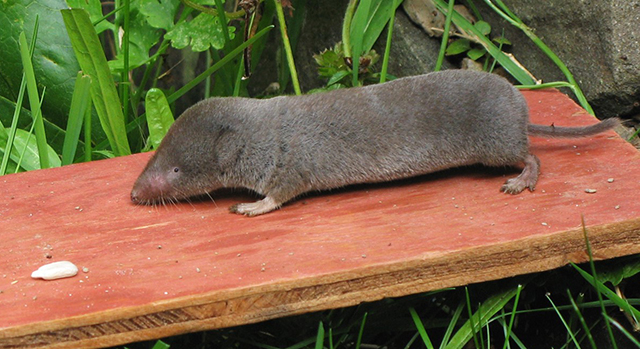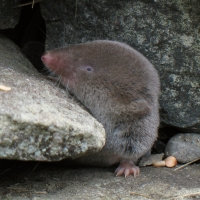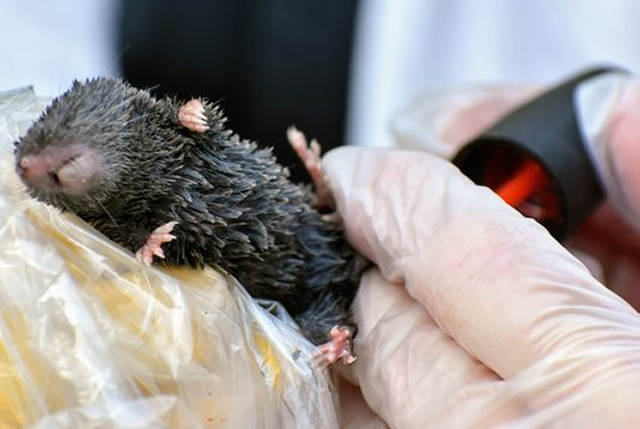By the second year into the project, we'd live-trapped 100’s of white-footed mice, dozens of meadow voles & eastern chipmunks, and a smattering of house mice. This data led me to realize we had a conspicuous absence of one group of animals: the insectivores (shrews and moles). Neither had never been seen or caught in Riverside Park, so my goal from that point on turned into documenting a shrew in our park.
In 2007 and 2008, we documented dragonfly wings under our snake cover boards across the river, which are often cohabitated by small mammals (the dragonfly wings indicative of an insectivore). That meant that with time, a shrew population (if it existed) could easily move across the river into Riverside Park given the right conditions. Since our land stewardship department continued to grow and habitat restoration continued to be their focus, I knew shrews could be a reality in the near future.
Today's TMJ4 stopped by the Center to shoot a short segment after they heard about our new discovery. Check out the video below!
Optimism propelled me to continue on my shrew quest. In Fall of 2015 during a bird walk, we found a dead shrew on the Oak Leaf Trail, which could have meant we had a new shrew population or could have meant that a raptor flying over the park dropped it. It was found close to the Cooper’s Hawk nest from earlier that season, so I remained skeptical. Yet, the 2016 field season came and went, still with no shrew captures. Several community members continued to rub salt in the wound by telling me how close they lived to Riverside Park and how often they found shrews dead in/by their houses (cat captures).

Example of a northern short-tailed shrew (Blarina brevicauda) photographed by Gilles Gontheir
As of today, we are happy to report that we positively have a representative from a new order of animals residing in Riverside Park! The insectivores are real!! On July 18, 2017 at 6:45 AM I found a live northern short-tailed shrew (Blarina brevicauda) just behind the community gardens close to the tower. It was an adult female weighing 21 grams. Even cooler, she was alive and healthy, which isn’t always the case with shrews because they stress out easily and often die in traps. Plus, they have a very fast metabolism, needing to eat constantly, some species dying of starvation if they don’t eat every few hours. But, not #3B! She sat there in her processing bag smiling at me with her cute long-snouted shrew smile and tiny beady eyes.
This soggy and very much alive shrew was proof positive of the species' arrival in Riverside Park! Captured and released after this blog was written, you can read more about it in this recent article from the Milwaukee Journal Sentinel!
Photo: Charlotte Catalano
Murphy’s Law would of course have his say in the end. Hands shaking and heart racing, I took out my phone to take photographs of the little lady only to discover a frozen black screen on my phone. As I tried to reboot my phone to get my camera working again, I let go my grip on #3B not wanting her to surprise me with a poisonous bite and placed her back in her processing bag. (Seriously, this is one super cool small mammal. It has a venomous bite AND uses echolocation to navigate and find food!) I got my phone working again and looked up just in time to see #3B crawl/hop out of her processing bag and scurry away into the bush. 11 years of work scampered away into the woods with no photo-documentation or nail polish marking on her tail. Most certainly not a figment of my imagination, but no proof to share in year-end reports of bragging rights texts.
Long story short, big props to the Land Stewards for all of their hard work through the years to restore and improve Riverside Park. The 26 furred species of Riverside Park are happy to have quality digs. Now onto Masked Shrews and Mustelids!






